|
Vocapedia >
Arts >
Painting, Sculpture > Sculpture

Gateshead, UK
The Angel of the North statue
is covered in snow,
as a yellow weather warning for
snow and ice remains in place
for the eastern coast,
stretching from Scotland to
East Anglia
Photograph: Owen Humphreys
PA
A helicopter crash and a cat in
the wild:
photos of the day – Friday
The Guardian’s picture editors
select photographs
from around the world
G
Fri 1 Dec 2023
13.43 CET
https://www.theguardian.com/news/gallery/2023/dec/01/
helicopter-crash-and-cat-in-wild-photos-of-the-day-friday
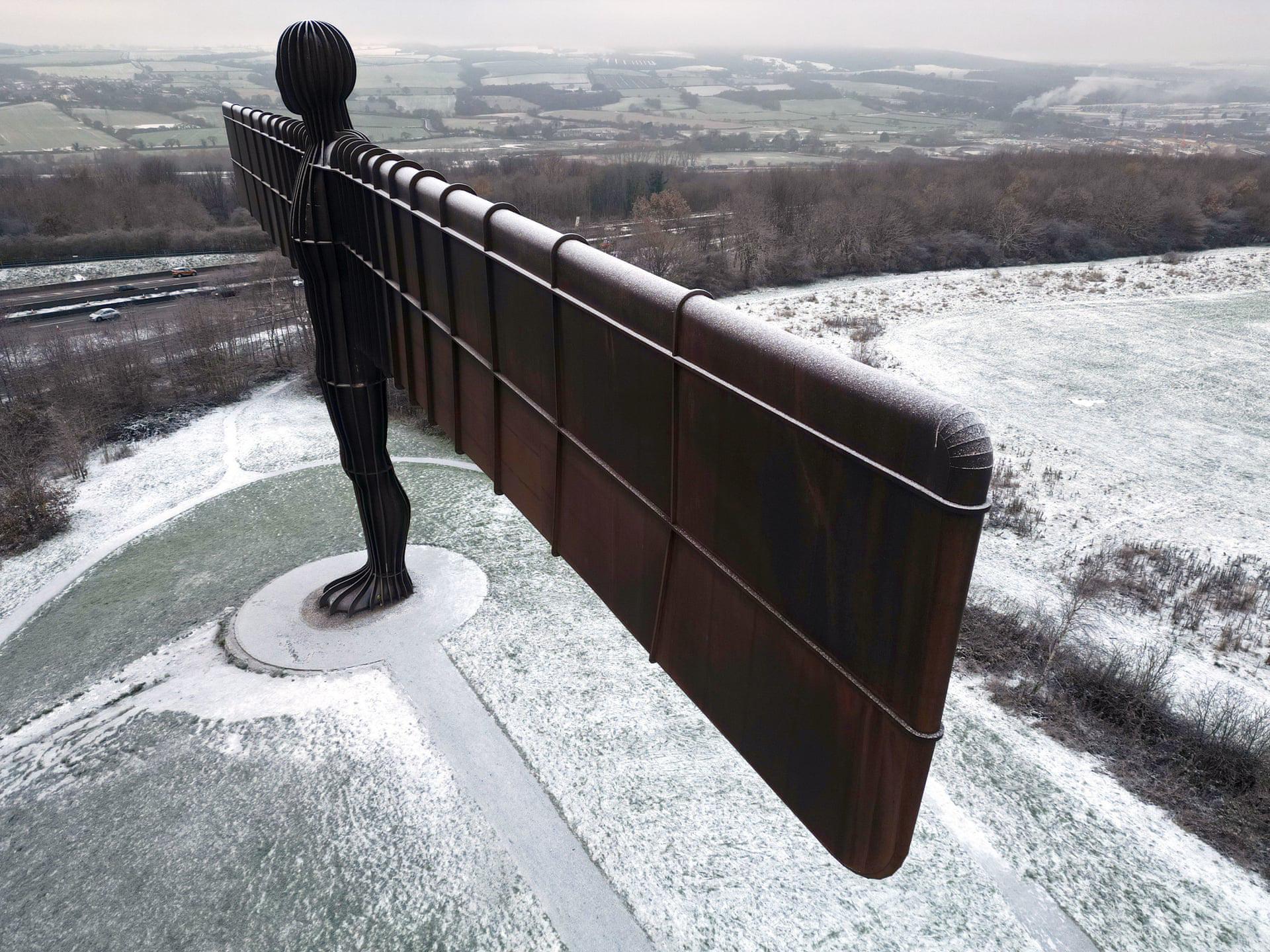
Gateshead, England
A dusting of snow decorates the
Angel of the North in Gateshead
Photograph: Owen Humphreys
PA
A Nasa capsule and wintry
weather: Monday’s best photos
The Guardian’s picture editors
select photo highlights from around the world
G
Mon 12 Dec 2022 12.57 GMT
https://www.theguardian.com/news/gallery/2022/dec/12/
a-nasa-capsule-and-wintry-weather-mondays-best-photos
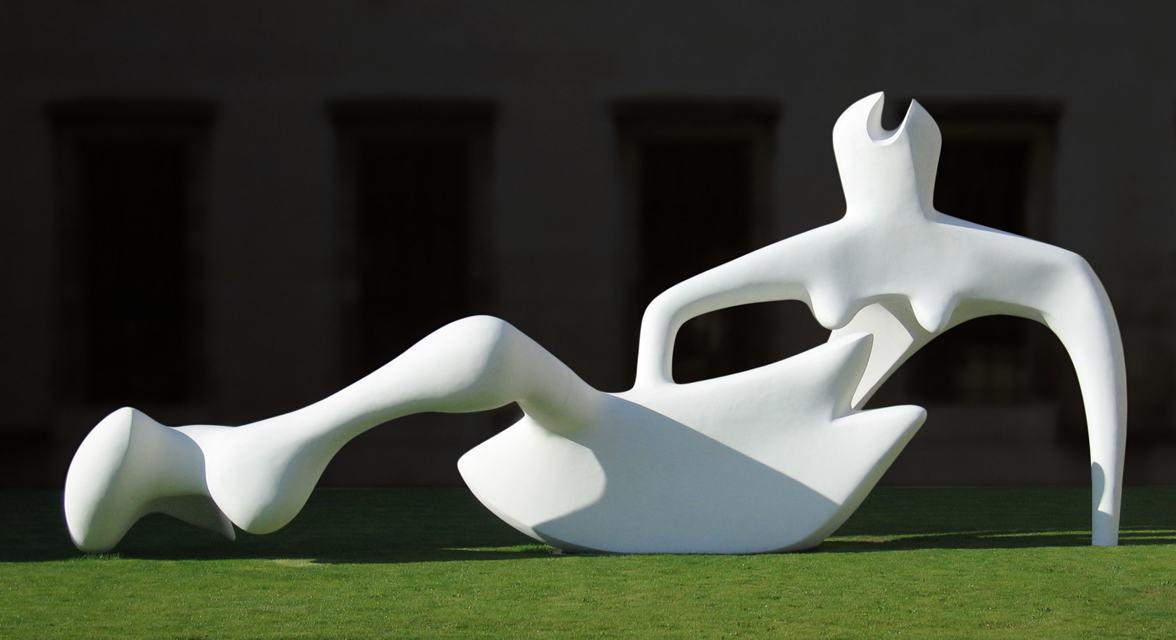
Henry Moore sculpture.
Reclining Figure (1951)
outside the Fitzwilliam Museum, Cambridge,
is characteristic of Moore's sculptures,
with an abstract female figure intercut
with voids.
There are several bronze versions of this sculpture,
but this one is made from
painted plaster.
http://en.wikipedia.org/wiki/Henry_Moore
Image: HenryMoore RecliningFigure 1951.jpg
from Wikipedia
http://upload.wikimedia.org/wikipedia/commons/e/e1/HenryMoore_RecliningFigure_1951.jpg
added 25 July 2007
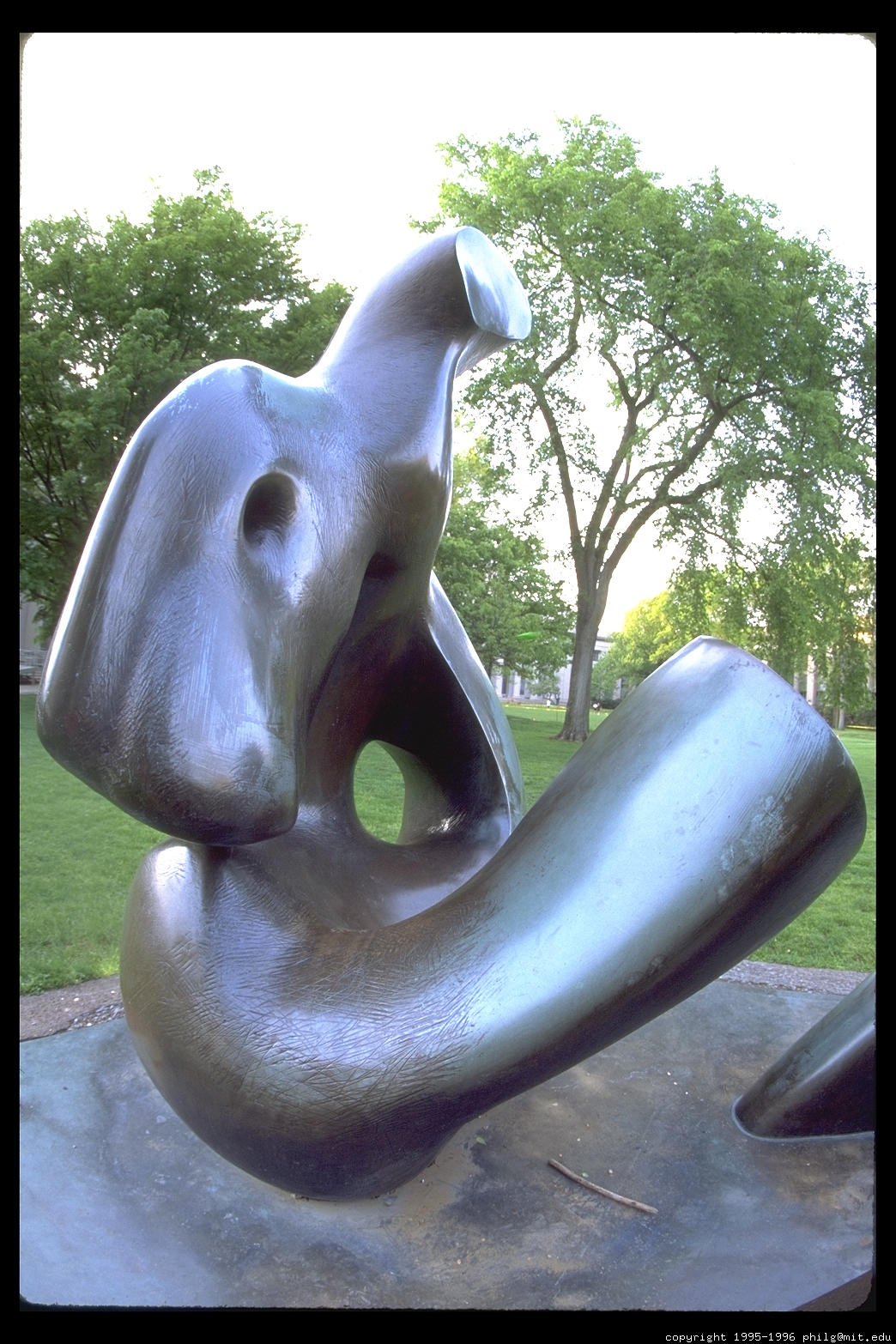
Henry Moore sculpture.
Killian Court. Massachusetts Institute of
Technology
Canon EOS-5, 15mm fisheye lens
copyright 1995-1996
philg@mit.edu
http://photo.net/photo/pcd2388/henry-moore-23.tcl
added 25 July 2007
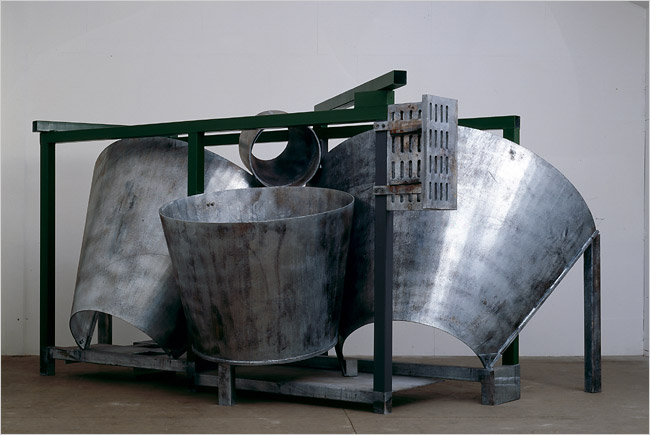
Anthony caro's "Jupiter."
Mitchell-Inness & Nash
A Passage for the Master of Heavy Metal
NYT
July 25,
2007
https://www.nytimes.com/2007/07/25/
arts/design/25caro.html
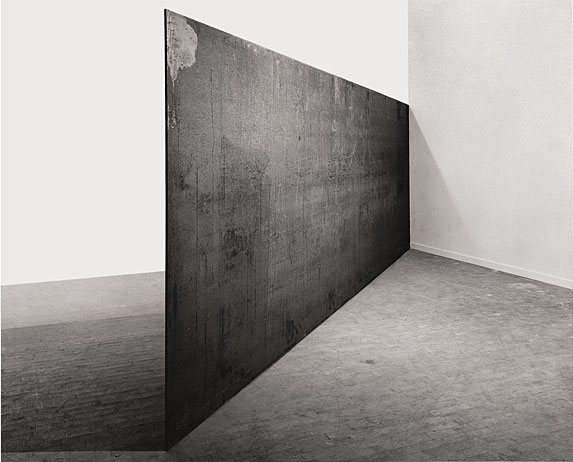
Strike: To Roberta and Rudy, 1969–71.
Hot-rolled steel, 96 x 288 x 1 inches.
Solomon R. Guggenheim Museum,
Panza Collection. 91.3871.
© 2005 Richard Serra/Artists Rights Society (ARS),
New York.
http://www.guggenheimcollection.org/site/artist_work_md_144A_7.html
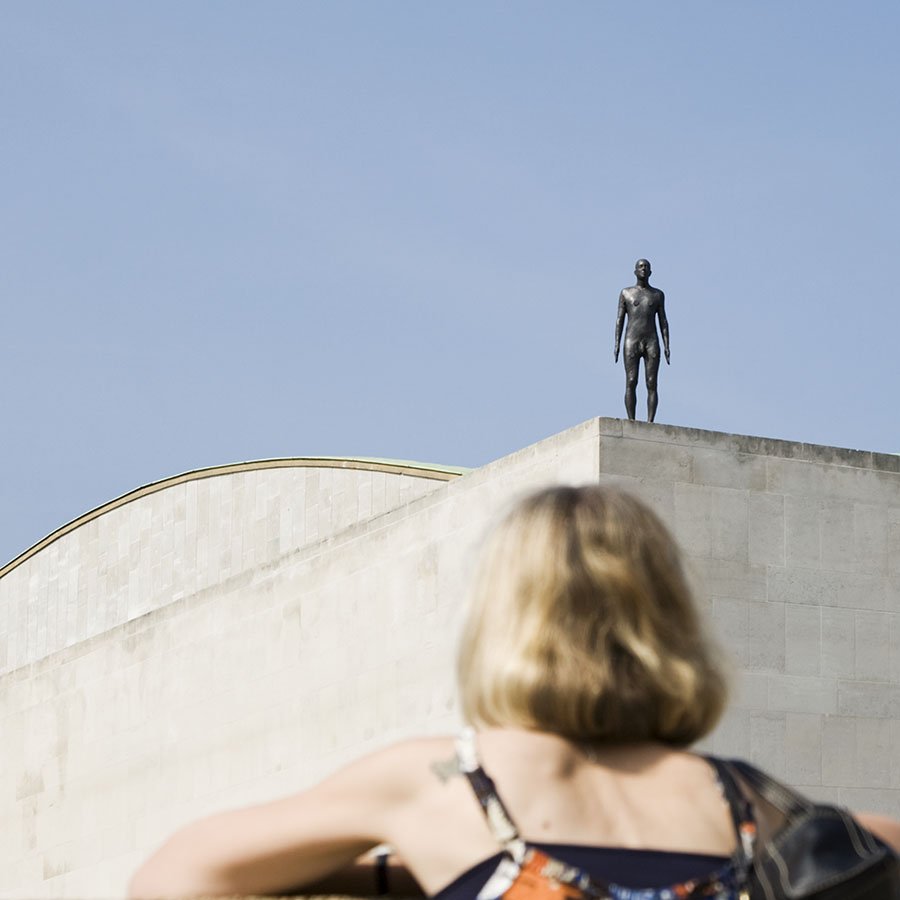
Antony Gormley > London sculpture
1 of 31 life-size figures on London's skyline
Author: Antony McCallum
Wikipedia
http://en.wikipedia.org/wiki/Image:Gormley-event-horizon.jpg
sculpture
'performing' sculptures
UK
http://www.theguardian.com/artanddesign/2014/jul/31/
tate-2015-programme-calder-hepworth-pollock
Presence: The
Art of Portrait Sculpture – review 3
June 2012
Holburne Museum, Bath
http://www.guardian.co.uk/artanddesign/2012/jun/03/
presence-art-portrait-sculpture-holburne-review
sculptor
USA
https://www.nytimes.com/2024/03/28/
arts/design/richard-serra-death-notebook.html
https://www.nytimes.com/2011/04/11/
arts/design/john-mccracken-sculptor-of-geometric-forms-dies-at-76.html
women sculptors UK
https://www.theguardian.com/artanddesign/2011/may/22/
sarah-lucas-polly-morgan-female-sculptors
workshop UK
https://www.theguardian.com/artanddesign/2013/apr/29/
michael-landy-patron-destruction
model
USA
https://www.nytimes.com/2022/12/15/
obituaries/audrey-munson-overlooked.html
grand sculptures
> Antony Gormley UK
https://www.theguardian.com/artanddesign/
gormley
https://en.wikipedia.org/wiki/
Angel_of_the_North
https://www.theguardian.com/news/gallery/2023/dec/01/
helicopter-crash-and-cat-in-wild-photos-of-the-day-friday
https://www.theguardian.com/news/gallery/2022/dec/12/
a-nasa-capsule-and-wintry-weather-mondays-best-photos
http://www.guardian.co.uk/artanddesign/2010/jun/03/antony-gormley-lights-white-cube
https://www.independent.co.uk/arts-entertainment/art/news/
gormley-reveals-labyrinthine-artwork-1990527.html - 3
June 2010
http://www.guardian.co.uk/artanddesign/gallery/2010/mar/10/antony-gormley-new-york-sculptures
http://www.independent.co.uk/arts-entertainment/art-and-architecture/news/
modern-public-artworks-are-crap-says-gormley-this-is-how-it-should-be-done-791922.html
http://www.guardian.co.uk/arts/gallery/2007/may/15/1?picture=329852334
http://www.guardian.co.uk/arts/gallery/2007/may/03/art?picture=329805762
https://www.theguardian.com/artanddesign/2005/jun/25/
art
https://www.theguardian.com/artanddesign/2005/jun/25/
art
Antony Gormley > angel of
the North UK
https://www.theguardian.com/news/gallery/2023/dec/01/
helicopter-crash-and-cat-in-wild-photos-of-the-day-friday
https://www.theguardian.com/news/gallery/2022/dec/12/
a-nasa-capsule-and-wintry-weather-mondays-best-photos
metal sculptures > Richard Serra UK
https://www.moma.org/interactives/exhibitions/2007/
serra/
http://www.guardian.co.uk/arts/features/story/0,11710,1329744,00.html
http://www.bbc.co.uk/radio3/johntusainterview/serra_transcript.shtml
metal sculptures
> Anthony Caro UK
http://arts.guardian.co.uk/art/news/story/0,,2134196,00.html
http://observer.guardian.co.uk/review/story/0,,2078342,00.html
http://arts.guardian.co.uk/features/story/0,,1385495,00.html
https://www.theguardian.com/uk/2004/mar/08/
arts.artsnews1
metal
sculpture > torqued metal rings USA
https://www.nytimes.com/2024/03/28/
arts/design/richard-serra-death-notebook.html
metal
sculpture > curves USA
https://www.nytimes.com/2024/03/28/
arts/design/richard-serra-death-notebook.html
geometric forms
USA
https://www.nytimes.com/2011/04/11/
arts/design/john-mccracken-sculptor-of-geometric-forms-dies-at-76.html
neon sculptures
> Chryssa USA
http://www.nytimes.com/2014/01/19/
arts/chryssa-artist-who-saw-neons-potential-as-a-medium-dies-at-79.html
kinetic
sculpture UK
https://www.theguardian.com/artanddesign/2013/apr/29/
michael-landy-patron-destruction
sound sculpture / a sound piece
UK
https://www.theguardian.com/artanddesign/2007/apr/17/
art.jonathanjones
https://www.theguardian.com/culture/2004/oct/12/1
fibreglass sculpture
steel
plastic
USA
http://www.nytimes.com/2010/05/15/arts/design/15kauffman.html
papier mache UK
https://www.theguardian.com/artanddesign/gallery/2022/may/07/
household-favourites-everyday-objects-in-papier-mache-bernie-kaminski-in-pictures
ceramics
USA
http://www.nytimes.com/2012/02/25/
arts/design/ken-price-sculptor-who-helped-elevate-ceramics-dies-at-77.html
steel
crushed-up cars
UK
https://www.theguardian.com/artanddesign/2011/dec/22/
john-chamberlain-sculptor-cars-dies
light
sculptures UK
https://www.theguardian.com/artanddesign/article/2024/jun/19/
anthony-mccall-light-sculptures-alive-tate-modern
sculptural installation
UK
https://www.theguardian.com/artanddesign/2011/dec/05/
martin-boyce-turner-prize-winner
conceptual Art movement
USA
http://www.nytimes.com/2012/10/18/
arts/design/michael-asher-artist-dies-at-69.html
conceptual artist
USA
http://www.nytimes.com/2014/07/16/
arts/design/on-kawara-conceptual-artist-who-found-elegance-in-every-day-dies-at-81.html
British pop art
UK
https://www.theguardian.com/culture/2005/apr/22/
obituaries
statue
UK
https://www.theguardian.com/artanddesign/jonathanjonesblog/2012/oct/11/
damien-hirst-statue-monstrosity
Duane Hanson USA 1925-1996
American Photorealist Sculptor
https://en.wikipedia.org/wiki/
Duane_Hanson
carve
UK
https://www.theguardian.com/lifeandstyle/2011/aug/25/
female-uk-sculptures-women
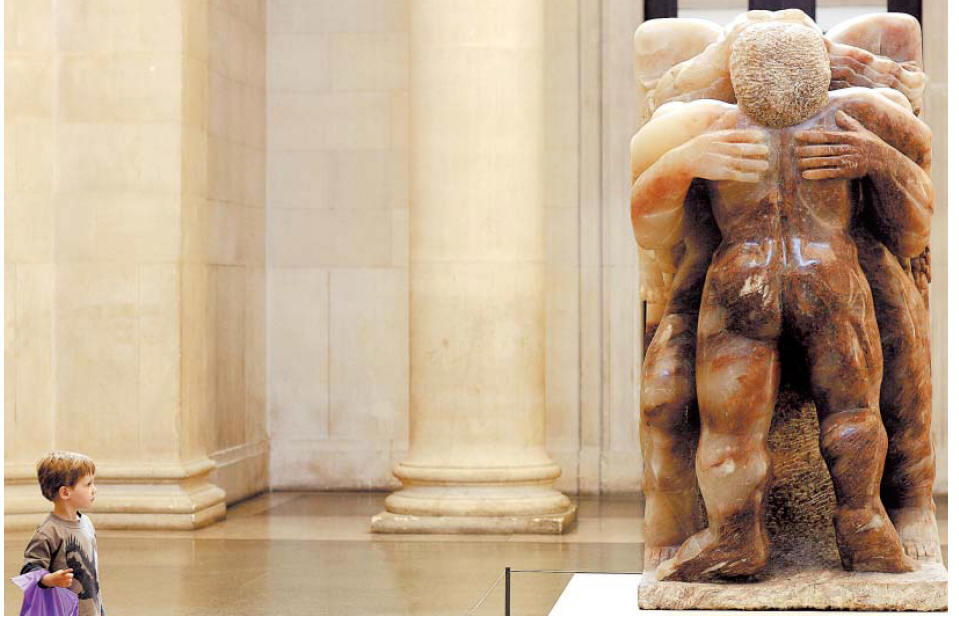
Taking the Tate into the future
Charlotte Higgins, arts correspondent
The Guardian
p. 9
Monday September 12, 2005
https://www.theguardian.com/uk/2005/sep/12/
arts.artsnews1
iconoclasm
UK
https://www.theguardian.com/artanddesign/2013/jul/05/
tate-art-under-attack-british-iconoclasm
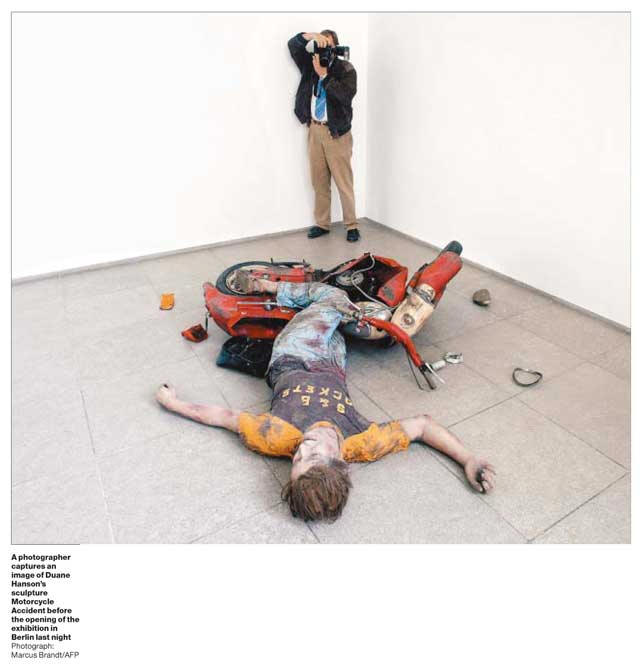
The Guardian p. 3 22
September 2004
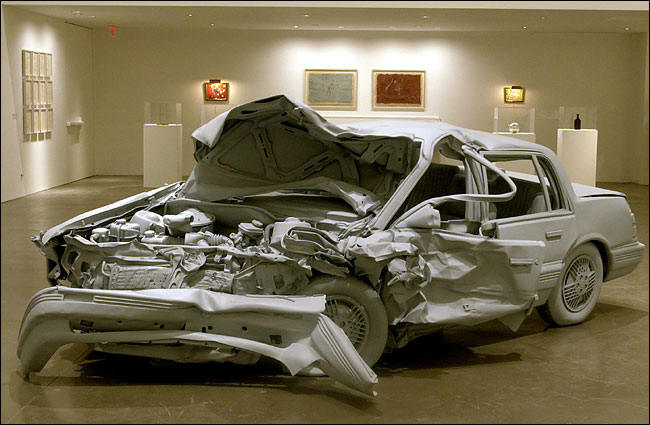
Charles Ray's "Unpainted Sculpture" (1997)
Photograph: Craig Lassig for The New York Times
April
15, 2005
NYT
https://www.nytimes.com/2005/04/15/
arts/design/probing-fringes-finding-stars.html
Corpus of news articles
Arts > Sculpture
Art Review | Alexander Calder
Calder at Play:
Finding Whimsy in Simple Wire
October 17, 2008
The New York Times
By HOLLAND COTTER
Is art basically glorified child’s play, extending into adulthood, through a
lifetime, picking up ideas and gaining finesse as it goes? That’s one way to
think of “Alexander Calder: The Paris Years, 1926-1933” at the Whitney Museum of
American Art. Few exhibitions have focused so intently on one artist’s child
within. It’s a Peter Pan syndrome show.
It’s also a large show, with a chunky, charming catalog. Yet it feels intimate
and light, not to say lightweight. Gallery by gallery, it’s as suspenseful and
insubstantial as a magic act: what will the artist pull from his sleeve next?
The story it tells is like a Kids R Us version of early 20th-century Modernism,
with a grown-up surprise at the end.
Calder didn’t start out with ambitions to be an artist; if anything, he was
pulled in the opposite direction. He watched his father, a professional
sculptor, fret over commissions and struggle with money. So when it came time
for college the young Calder chose an engineering school in New Jersey over art
school.
But of course he was an artist, a natural. He may just not have known at first
what that meant. Even as a child he was astonishingly inventive. The tiny figure
of a rocking-horse-style bird shaped from brass sheeting is, for economy of form
and conceptual daring, one of the more radical works in the show. He made it
when he was 11.
He made stuff all the time. He was one of those people with nonstop eyes and
hands: every scrap of stray matter was a candidate for transformation. Give him
some wire, clothespins and a scrap of cloth and, presto chango, you had a bird
or a cow or a circus clown: nothing, then something, which is what magic is.
There’s a hyperactive pace to his early career. While working at engineering
jobs after college, he was also drawing like crazy and designing toys. In 1923
he enrolled at the Art Students League to study painting; John Sloan and George
Luks were his teachers. At the same time he took on illustrating gigs for
publications like The New Yorker and The National Police Gazette.
His academic drawings from the time are gauche and ordinary. The
staying-still-in-a-studio they required obviously cramped his style. Much
fresher is the dashed-off, manic-looking magazine work. And his Ash Can
School-type paintings of New York scenes — a drunken party; a trip to the
Ringling Brothers and Barnum & Bailey Circus — have a gawky spark of life. Then
there are his pen-and-ink drawings of zoo animals. They’re in a different
category, almost by a different artist, one more relaxed and assured. Often done
as one continuous line, they are like an effortlessly sophisticated form of
penmanship. So are some of the openwork sculptures of bent and twisted wire that
he began to experiment with at this time.
In 1926, with all these balls in the air, he suddenly moved to Paris, because
motion for him was a stimulant and because he felt that Paris was the hot place
to be, which it was. With its crowded cafes, charged thinking, endless talking
and jumpy personalities, the city was hyperkinetic. Calder fell in love with it.
And, although he continued to return to New York for long stretches, he made
Paris his home base for seven years.
His wire sculpture took off there. Several examples in the form of portrait
heads are the first thing you see when you step off the elevator on the
Whitney’s fourth floor. They’re an arresting sight, in a gently wow-inspiring
way. Wows were what Calder was after, along with chuckles and satisfied ahs. He
was a showman, a performer. “See what I can do, right before your eyes, without
even trying?” his art seems to say.
For his purposes industrial steel wire was an ideal medium. It was cheap,
malleable, portable and equally adaptable to precision work and doodling, which
to him were almost the same thing. Wire was like three-dimensional ink; it was a
means of combining drawing and sculpture in space.
In the Paris years he used it for portraiture. His first subject was a star he
admired from afar, Josephine Baker. She was the toast of the town in the 1920s.
One look at film clips of her dancing a semi-nude Charleston tells you why.
Calder made five small Baker figures; four are in the show. With their tiny
heads, spiraling breasts and long, long single-strand legs, they catch something
of the image Baker wanted to project: that of an ethnographic specimen come to
irrepressibly self-amused life.
He made other figures too, of the tennis champion Helen Wills, of John D.
Rockefeller playing golf. They are the work of a pop illustrator, clever but
nothing special. But for people he actually knew, portrait heads were the form
of choice. Of the 18 examples in the show, most depict people Calder had met in
avant-garde circles in Paris, including celebrity friends like Edgard Varèse,
Joan Miró and Alice Prin, the multitasking muse better known as Kiki de
Montparnasse. You can see why Calder did these likenesses: they were an
attention-getting novelty; they advertised his skill; they gave him a pretext to
network.
They also look as if they were fun to make. One of the attractive features of
Calder’s art from this period is its gee-I-could-do-that unpretentiousness. At
the same time each is a fabulous little virtuosic feat, abstract but exacting.
Set on bases or freely suspended, and casting subtle shadows — Jennifer Tipton,
the theatrical lightning designer, was in charge of illumination — the portraits
have the wit and refinement that will show up again in Calder’s first abstract
sculptures.
Refinement is not a quality associated with the famously funky tabletop
assemblage known as Calder’s Circus. A prime draw of the Whitney’s permanent
collection, it has rarely been off view since the museum acquired it 25 years
ago. But it gets a rethinking here.
Up to now it has been exhibited as a compact, one-ring affair with its many tiny
handmade figures — clowns, acrobats, animal trainers and so on — doing all the
varied things they do at once. The show’s curators, Joan Simon of the Whitney
and Brigitte Leal of the Centre Pompidou in Paris, have separated the components
into individual acts meant to be seen as taking place sequentially, a format
that corresponds to the way Calder himself presented the work in live
performances.
You can see him giving one in a 1955 film by Jean Painlevé, which is in the
show. Calder introduces the figures silently one by one, manipulating them and
activating the low-tech mechanisms (cranks, pull-strings, air hoses) that
animate their activities. If, like me, you’ve always found Calder’s Circus a
little too cute for comfort, the film may change your mind.
When at one point Calder slowly and carefully removes layer after layer of
hand-sewn costumes from one clown figure until he arrives at what looks like a
skeleton, it’s hard to known whether you’re seeing a circus or a medieval
morality play. No wonder the original Paris performances pulled in the savvy
audiences they did. Jean Cocteau, Marcel Duchamp and Piet Mondrian were among
the many vanguard types who sat on crates and watched with rapt attention.
The Whitney show’s real shock comes a bit later, though, in the last three
galleries, when Calder the polymath entertainer becomes Calder the Modern
sculptor. The shift happened almost literally overnight. In October 1930 he
visited Mondrian’s Paris studio; instantly he became an abstract artist. And for
some people Calder starts to become interesting only at this point. No more
Kikis and tennis players. Now everything is floating circles and curving lines
anchored by balls in space.
But two things stayed constant: motion and play. For conservation reasons only
one sculpture in the Whitney show is now motorized as intended; others can be
seen in action on film. And action is the essence in a piece like “Small Sphere
and Heavy Sphere” (1932-33), which consists of two suspended wooden balls and,
set out on the gallery floor, a wooden box, four wine bottles, a can and a gong.
Nothing much, right? Until — as seen on film — the balls, attached to a
motorized bar, start to move in a slow circle, hitting a bottle, then the can,
then the gong. Music! (Varèse loved this piece.) Yet move a bottle an inch or
two this way or that and the performance changes. Turn on a fan or open a window
and you could create a new score. The game Calder is playing is a finely tuned,
verging on magical, game of chance. And it really is a game. And it really is
play.
“Alexander Calder: The Paris Years, 1926-1933”
remains at the Whitney Museum of
American Art,
945 Madison Avenue (at 75th Street),
through Feb. 15.
It will then
be at the Centre Pompidou, Paris,
from March 18 through July 20.
Calder at Play: Finding
Whimsy in Simple Wire,
NYT, 17.10.2008,
https://www.nytimes.com/2008/10/17/
arts/design/17cald.html
Modern public artworks are 'crap',
says Gormley.
This is how it should be
done
Thursday, 6 March 2008
The Independent
By Arifa Akbar,
Arts Correspondent
Antony Gormley made his name as the creator of grand sculptures with his
monumental Angel of the North. So it may surprise many artists attempting to
emulate his success to hear that he has condemned the current crop of modern
public artworks across the UK as "crap".
"On the whole," he said, "We have not reinvented the statue very convincingly
for the 21st century," adding "There is an awful lot of crap out there."
A decade after his experimental 65ft-high figure was erected in Gateshead,
Gormley said the success of the sculpture had inadvertently set a precedent for
the proliferation of unchallenging works of art in public spaces.
He singled out The Meeting Place statue of two lovers embracing at St Pancras
International Station for criticism. Other works he dislikes are a statue of
Churchill and Roosevelt on Bond Street and David Wynne's Boy With a Dolphin in
Chelsea.
He went on: "I don't like the way the Angel of the North has been used for some
kind of precedent to encourage people and local authorities looking for European
funding or investment. When we made the Angel, it was an experiment. We managed
to get lottery money and European funding but it was a huge risk."
To many, Gormley, who is currently on a shortlist for creating a sculpture for
the fourth plinth in London's Trafalgar Square, is the most prominent producer
of public art alive in Britain today. Aside from the Angel sculpture of 1998, he
also produced Another Place for Crosby Beach near Liverpool and Iron:Man, placed
in Birmingham's Victoria Square.
He said it was not the quantity of public artworks in Britain that offended him
but the prevailing lack of creativity.
"So much of the art of the 20th century has ended up being corralled into
museums. I would love to see more significant work in public spaces that is not
institutionalised – work that is truly everyone's. There are works that really
challenge you that maybe you don't understand at first but you keep going back
to see them because they niggle. But art placed in public spaces that does not
challenge does a disservice.
"A lot of public art is gunge, an excuse which says, 'we're terribly sorry to
have built this senseless glass and steel tower but here is this 20-foot bronze
cat'," he said.
The artist also felt that Britain needed a proper structure to shortlist and
judge commissions, similar to that currently in place in Germany and Holland,
which he claimed have greater forms of quality control for a commissioned piece
of public art.
"Here, the standards are very low [for] the way submissions are judged," he
said.
Gormley's outspoken comments came as he unveiled an indoor sculptural piece,
Lost Horizon, priced at £1.35m and displayed at White Cube Gallery in Mason's
Yard, London. It follows last year's public art project 'Event Horizon', which
he did with the Hayward Gallery, in which he placed several statues modelled on
his own body on buildings around central London.
Another new work, Firmament, priced at £850,000, is a geometrical structure
based on the human body and could also be suitable for outdoor display.
The artist joins a long-running debate on the value of public art which was
reinvigorated by Marjorie Trusted, senior curator of sculpture at the Victoria
and Albert Museum, who said many commissions were "disappointing, old-fashioned
and awkward" while Tim Knox, director of Sir John Soane's Museum in London,
dismissed them as "horrors".
Modern public artworks
are 'crap', says Gormley.
This is how it should be done, I, 6.3.2008,
http://www.independent.co.uk/arts-entertainment/art-and-architecture/news/modern-public-artworks-are-crap-says-gormley-this-is-how-it-should-be-done-791922.html
Art Review | Richard Prince
Pilfering a Culture Out of Joint
September 28, 2007
The New York TimeS
By ROBERTA SMITH
Richard Prince has heard America singing, and it is not in tune. The
paradoxically beautiful, seamless 30-year survey of his work at the Guggenheim
Museum catches many of our inharmonious country’s discontents and refracts them
back to us. The central message of this array of about 160 photographs,
drawings, paintings and sculptures, most of which incorporate images or objects
cribbed from popular culture, is that we won’t be getting along any time soon.
But in Mr. Prince’s view, little of life’s cacophony is real except the parts
deep inside all of us that are hardest to reach.
Mr. Prince has devoted his career to this surface unreality, attempting to
collect, count and order its ways. He has said that his goal is “a virtuoso
real,” something beyond real that is patently fake. But his art is inherently
corrosive; it eats through things. His specialty is a carefully constructed
hybrid that is also some kind of joke, charged by conflicting notions of high,
low and lower.
Frequent targets include the art world, straight American males and middle-class
virtue, complacency and taste. His work disturbs, amuses and then splinters in
the mind. It unsettles assumptions about art, originality and value, class and
sexual difference and creativity.
The work in the Guggenheim exhibition opening today, subtitled “Spiritual
America,” defines the nation’s culture as a series of weird, isolated
subcultures — from modernist abstraction to stand-up comedy to pulp-fiction
cover art — and gives them equal dignity. It begins on the ground floor with
“American Prayer,” a magnificent, haunting new sculpture for which the chassis
of a 1969 Charger, a classic muscle car, has been stripped bare and cantilevered
above the floor by a large block that merges with its hood. As aerodynamic as a
bird’s skull and as commodious as a double coffin, it is not on blocks but
lodged in one, like a stray bullet. Its bulky support suggests a pedestal, a
Minimalist box, an anchorage and an altar. It is spackled and Bondoed, ready for
its final, shiny coat, unlike the rest of the car. Together they form a memorial
to custom cars presented as an abstracted body awaiting resurrection or a
truncated crucifix lying in state.
Mr. Prince’s ancestors include Duchamp, Jasper Johns and especially Andy Warhol.
But unlike Warhol, he is much less interested in the stars than in the audience.
Thus he is just as much an heir to Walker Evans and Carson McCullers, with their
awareness of the common person.
Over the years, Mr. Prince has shown himself to be in touch with the same
shamed, shameless side of America that gave us tell-too-much talk shows, reality
TV and the current obsession with celebrity. Practically every last American
could find something familiar, if usually a bit unsettling, in his work. If he
were the Statue of Liberty, the words inscribed on his base might read: Give me
your tired, your poor, but also your traveling salesmen and faithless wives;
your biker girlfriends, porn stars, custom-car aficionados and wannabe
celebrities; as well as your first-edition book collectors (of which he is one).
It often seems that Mr. Prince has never met a piece of contemporary Americana
he couldn’t use. Customized checks with images of SpongeBob SquarePants or Jimi
Hendrix? He pastes them to canvas and paints on them. Mail-order fiberglass
hoods for muscle cars? He hangs them on the wall — instant blue-collar
Minimalist reliefs. Planters made of sliced and splayed truck tires? There’s one
at the Guggenheim, cast in white resin, where the fountain should be. Is it a
comment on the work of Matthew Barney, a gallery-mate who had his own Guggenheim
fete? Probably. But from above it resembles a plastic toy crown or the
after-splash of milk in that famous stop-action Harold Edgerton photograph.
And borscht belt jokes? They are a signature staple that runs rampant in the
show, appearing on modernist monochromes, on fields of checks and as arbitrary
punch lines for postwar New Yorker or Playboy cartoons. These examples of a
better class of humor are variously whole, fragmented, steeped in white or piled
into colorful, nearly abstract patterns yet still retain their familiarity. The
same jokes occur in different works, alternately writ big or little, sharp or
fading, straight or rippled as if spoken by someone on a bender.
“My father was never home, he was always drinking booze. He saw a sign saying
‘Drink Canada Dry.’ So he went up there.” “I went to see a psychiatrist. He
said, ‘Tell me everything.’ I did, and now he’s doing my act.”
Mr. Prince’s act has been one of continual breakouts and surprises, some better
than others, and of increasing command. Selected and expertly installed by Nancy
Spector, the Guggenheim’s chief curator, with considerable input from Mr.
Prince, the show includes examples from nearly 20 series of works, but it also
skips a lot of weaker efforts, tryouts and rehearsals. It sums up more than
recounts the path of a brilliant artist whose sense of visual style is matched
by an ear for language, as he progresses from hip, hermetic mind games to hip,
inclusive generosity and even tenderness.
Mr. Prince was born in the Panama Canal Zone in 1949 and has shown in New York
since the late 1970s. He is a leading member of the sprawling appropriation
generation of the early ’80s that included artists like Barbara Kruger, Cindy
Sherman and Jeff Koons and that continues to add new recruits, like Wayne Guyton
and Kelly Walker.
In a sense his career has been a process of self-liberation by expanding upon an
esoteric mode that he helped invent. His early work, the essence of orthodox
postmodern appropriation, consists of influential yet hermetic rephotographs of
the ads and fashion spreads in glossy magazines. Cropped, enlarged and grouped
according to subject and pose, these images exposed with almost anthropological
precision advertising’s subliminal codes and stereotypes. For all its elegance,
the early work had a spindly endgame air that seemed to disdain anything as
touch-feely as making an actual art object. But that is just what Mr. Prince
proceeded to do, regularly introducing new subjects, mediums and techniques.
The primness of the early photographs gives way to the Technicolor flamboyance
of the Cowboy series, pirated from the famous Marlboro Country campaign. Then
come the grainy, clustered “gangs,” as he called them, of related magazine
images — big-wheeled trucks, rock bands, surfers’ waves. Surprisingly, Mr.
Prince’s latest camera works reject appropriation altogether. They are dour yet
lyrical images of the hardscrabble area in upstate New York where he lives.
His paintings have become similarly free, or perhaps traditional, as evinced by
his pulp-fiction-cover Nurse series. But the final gallery leaves him working at
new extremes. On the one hand he seems to be painting for all his worth in his
garish new reprises of de Kooning’s “Women,” in which most of the girls are guys
who look a little too much like Jar Jar Binks. On the other are his latest
straight-out ready-mades: the American English series simply and suavely
juxtaposes American and English editions of books like Lenny Bruce’s “How to
Talk Dirty and Influence People” or Bob Dylan’s “Tarantula,” creating a subtle
exegesis of the national character of design.
Early in the show an especially imposing joke painting offers a summation of his
ambition. “I Know a Guy” (2000) has a snowy surface powdered with eminently
touchy-feely plumes of pastel but starkly divided by a horizontal band of large
black Helvetica type, all caps and hand-stenciled. In a crowded rush, the words
inject a twitching dose of stand-up monologue: “I knew a guy who was so rich he
could ski uphill. Another one, I told my mother-in-law my house is your house.
Last week she sold it. Another one ... ”
The clincher here is the urgent aside “another one,” which has echoes in
subsequent joke paintings: “Again.” “One more.” It turns these paintings into
portraits of the artist at work, sweating it out, honing his material and
timing, egging himself on to come up with another one and then another one until
he gets our full attention, cracks us up and, in stand-up parlance, kills.
That, in a nutshell, might be the story of Mr. Prince’s career, one of nonstop
production, of collecting, editing and honing, of sifting and shifting styles
and techniques, and getting better all the time. Among other things, it means
that the Nurse and the de Kooning series, if continued, can only improve.
“Richard Prince: Spiritual America”
continues through Jan. 9
at the Guggenheim
Museum, 1071 Fifth Avenue,
at 89th Street; (212) 423-3500.
Pilfering a Culture Out
of Joint, NYT, 28.9.2007,
http://www.nytimes.com/2007/09/28/arts/design/28prin.html
A Passage
for the Master of Heavy Metal
July 25, 2007
The New York Times
By CAROL VOGEL
LONDON — Although he is widely viewed as Britain’s greatest living sculptor,
received a knighthood 20 years ago and has been the subject of countless museum
retrospectives, Anthony Caro has yet to have an exhibition in New York’s
Chelsea, the epicenter of today’s contemporary art scene.
“I used to go to New York all the time, but it’s been three years,” Mr. Caro,
83, said one recent morning over tea at a long wooden table in one of the former
pipe and piano factories where he works in North London.
But this fall, he will finally have his Chelsea moment. He recently completed a
series of monumental painted steel sculptures, weighing about two tons each,
titled “Passage.” Five of them will go on view at Mitchell-Innes & Nash in
Chelsea in October, and four will be shown at Annely Juda Fine Art in London in
September.
A return to the abstract steel sculptures that made him famous more than 40
years ago, the latest work is as architectural as it is sculptural. Yet unlike
the vast pieces by Richard Serra that are currently on view at the Museum of
Modern Art, which physically envelop the viewer, Mr. Caro’s latest sculptures
can be experienced only from a slight remove. There is no point of entry.
“When I saw this body of work I felt he had done something dramatic,” said Lucy
Mitchell-Innes, Mr. Caro’s New York dealer. “Although he picked up on old themes
from the ’60s of using grills and grids, this time they don’t just define space
but restrict access to it.”
Those who know Mr. Caro’s work will instantly recognize the “Passage” series as
his, yet the artist considers these sculptures a significant departure.
“I’m not interested in doing old things,” he said. “I’m always trying to push it
and see what happens.”
He said he chose that title for the series because he conceived of the
sculptures as visual passages, even though you cannot physically walk through
them.
One of the biggest changes from his past work is that he used galvanized steel
rather than rusted steel. “I thought I wanted to paint them, so I sent the steel
out to be galvanized in order to get the surface right,” he said. “And when it
came back, I liked the way it looked.” So he kept it as is.
While fragments of sculptural objects are strewn around his studio — remnants of
steel and machine parts that he buys by the weight at scrap yards around Europe
— the works from this new series were nowhere in sight. Some had been sent to
storage, and others were on their way to the dealers. He did have transparencies
of them carefully laid out on a lightbox.
In the Cubist tradition, Mr. Caro has long seized on found objects and used them
as the basis for his sculptures. One of the new works, “Star Passage,” made of
steel galvanized and painted blue, incorporates a big guillotine for slicing
steel that he found in the South of France. For another, “Chalk Line,” he took a
long stone drinking trough, laid it on wood and applied galvanized steel planes
to it in sections to make it seem as though he had dissected the stone.
Resting atop it is a hollow steel pole. “It is almost as if you crossed a Donald
Judd with a Roman sarcophagus,” Ms. Mitchell-Innes said.
Unlike most artists, Mr. Caro generally does not work from drawings or maquettes
when making sculptures. “I prefer to do the real thing,” he said. “You can feel
the weight and reality of moving around steel. Whereas if you do something on a
smaller scale, when it gets bigger it looks different.”
Sometimes, however, such free-style thinking is impossible, as with his current
project for a choir for a church in northern France.
Occupying several studio buildings of his London work space are a series of
dollhouse-like structures that are scaled-down models of the medieval Church of
St.-Jean-Baptiste in Bourbourg, including stained-glass windows and a pair of
round towers.
“It’s a 12th-century building, and at the time of Dunkirk, a plane landed on the
roof and caught fire to the church,” he said, referring to the German invasion
of the region in 1940. “The roof was restored but not the choir. Eight years
ago, they asked me to do the choir.”
Unlike his sculptures, in which issues of scale, materials and design are all up
to him, this project involves fitting a predetermined architectural space. “I’m
leaving nothing to chance,” Mr. Caro said as he peered into a wood model.
He has created two towers for the choir and what he called an immersion tank for
christenings. There will also be nine niches with sculptures in them that tell
the story of the Creation. “Not exactly the Creation from the Bible,” he said.
“More about animals, fish and things we see around us.” Outside the church, he
has designed a tower of Cor-Ten steel, which he also calls a visual passage.
Mr. Caro is accustomed to big projects. After attending Cambridge University
and art school, he began working as Henry Moore’s assistant in 1951. A decade
later he created his own large-scale abstract structures. They were considered
revolutionary at the time because he had abandoned figurative sculpture and gone
totally abstract. And rather than setting his sculptures on a pedestal, he
placed them on the ground, relating them directly to human scale.
By the 1960s and ’70s, he had become as well known as a Damien Hirst or Jeff
Koons is today. But with the wane of formalism in the United States, his
popularity waned, and he is now far better known in Europe.
Some contemporary artists still look to him for inspiration. The Los Angeles
sculptor Charles Ray has made works in homage to him, including a re-creation of
one of his most famous works, “Early One Morning,” a bright red horizontal metal
sculpture of disparate lines and planes.
Jessica Stockholder, a sculptor who directs graduate studies in sculpture at the
Yale University School of Art, says she is an enthusiastic fan. “I’ve always
admired him,” she said. “His work is about how things jump across space to meet
each other, and my work is about that too. In the ’80s I made a tabletop
sculpture piece called ‘Ode to Anthony Caro.’ ”
Just how a Chelsea audience will react to Mr. Caro’s latest work is anyone’s
guess. “Who can say what’s going to be hot or cold from one year to the next?”
Ms. Stockholder asked.
Meanwhile, Mr. Caro seems unconcerned. “When you get older,” he said, “you just
have to go your own way.”
A Passage for the Master of Heavy
Metal,
NYT,
25.7.2007,
https://www.nytimes.com/2007/07/25/
arts/design/25caro.html
Explore more on these topics
Anglonautes > Vocapedia
painting, street art, tattoes, sculpture
children's
books
e-books / reading on the
Internet
books
/ newspapers / www >
comics, superheroes, superheroines
graphic novels
architecture, towns, cities
describing pictures >
phrases and verb forms
Related > Anglonautes >
Arts
painting, sculpture
Related
Tate
UK
https://www.tate.org.uk/
https://www.tate.org.uk/visit/tate-modern
|